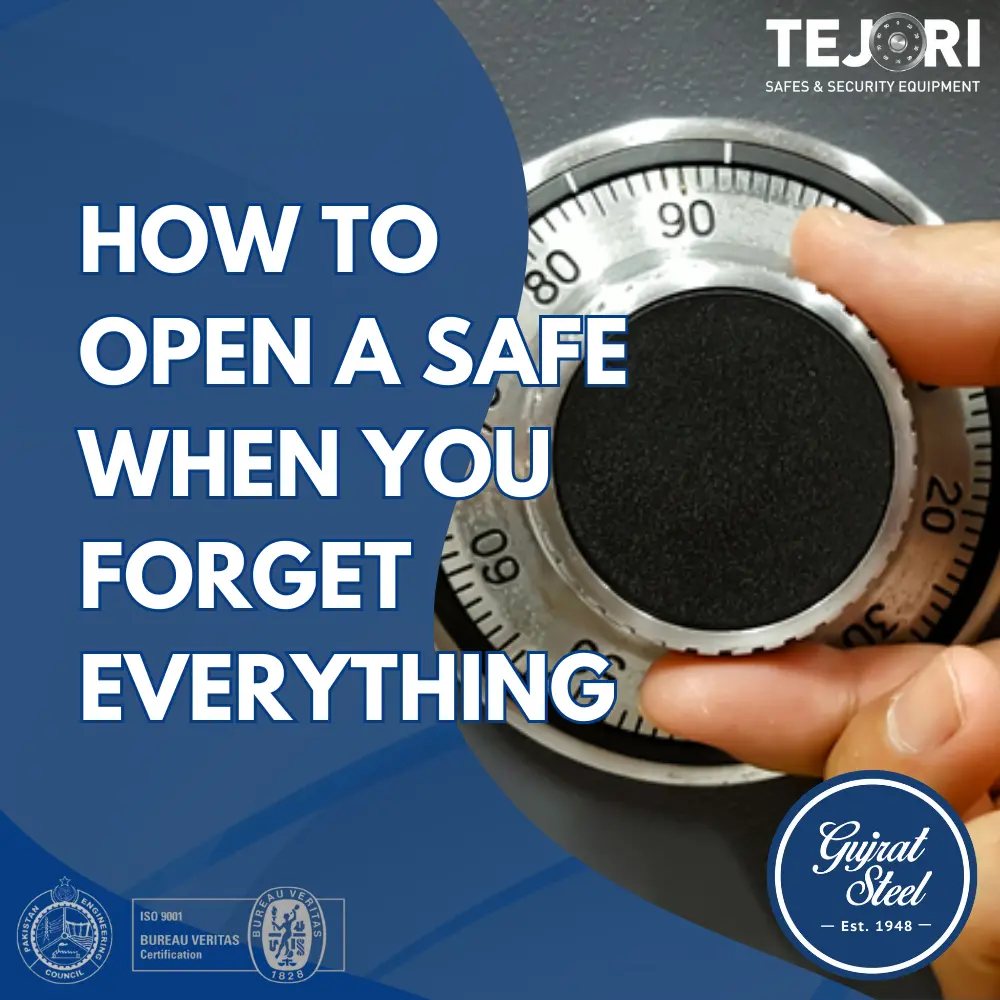Forgetting the combination to your safe or misplacing the key can be a stressful experience. Your valuables, important documents, or sentimental items are locked away, just out of reach. However, before you panic or consider drastic measures, there are several methodical steps you can take. This guide will walk you through the process for different types of safes.
Table of Contents
Before You Begin: The First Steps for Any Safe
Regardless of the type of safe you own, these initial steps can often solve the problem without any complex procedures.
Check the User Manual
This is the most important first step. If you still have the user manual that came with your safe, it is an invaluable resource. It will contain specific instructions for your model, including default factory codes, battery replacement procedures, and contact information for the manufacturer. Keep it in a separate, safe place—not inside the safe itself.
Contact the Manufacturer
If you can provide the safe’s serial number and proof of ownership, the manufacturer’s customer service department may be able to provide you with a backup combination or a replacement key. The serial number is often located on the back or side of the safe.
How to Open a 3-Combination Dial Safe
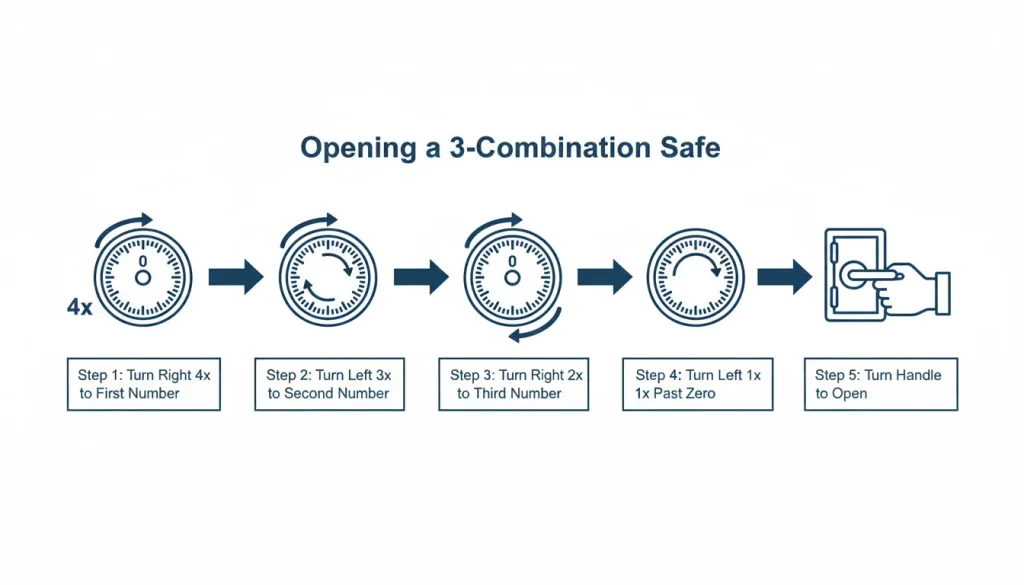
These classic safes use a spinning dial and require a precise sequence of turns to open. The common sequence is Left-Right-Left. Patience and precision are key.
Step 1: Reset the Dial
Begin by clearing any previous numbers you may have tried. Turn the dial to the RIGHT (clockwise) at least four full rotations. This resets the tumblers inside the lock. Stop with the zero mark at the top indicator.
Step 2: Enter the First Number
Turn the dial to the LEFT (counter-clockwise). Go past the first number of your combination two times, and then stop exactly on the number the third time you reach it. Do not overshoot the number; if you do, you must start the entire process over from Step 1.
Step 3: Enter the Second Number
From the first number, turn the dial to the RIGHT (clockwise). Go past the second number of your combination once, and then stop exactly on the number the second time you reach it.
Step 4: Enter the Third Number
From the second number, turn the dial to the LEFT (counter-clockwise). Do not pass the number this time. Turn the dial directly to the third number of your combination and stop precisely on it.
Step 5: Open the Safe
The lock should now be disengaged. Turn the handle to open the safe’s door. If it does not open, repeat the entire process, paying close attention to the number of rotations and stopping exactly on each number.
How to Open a 4-Combination Dial Safe
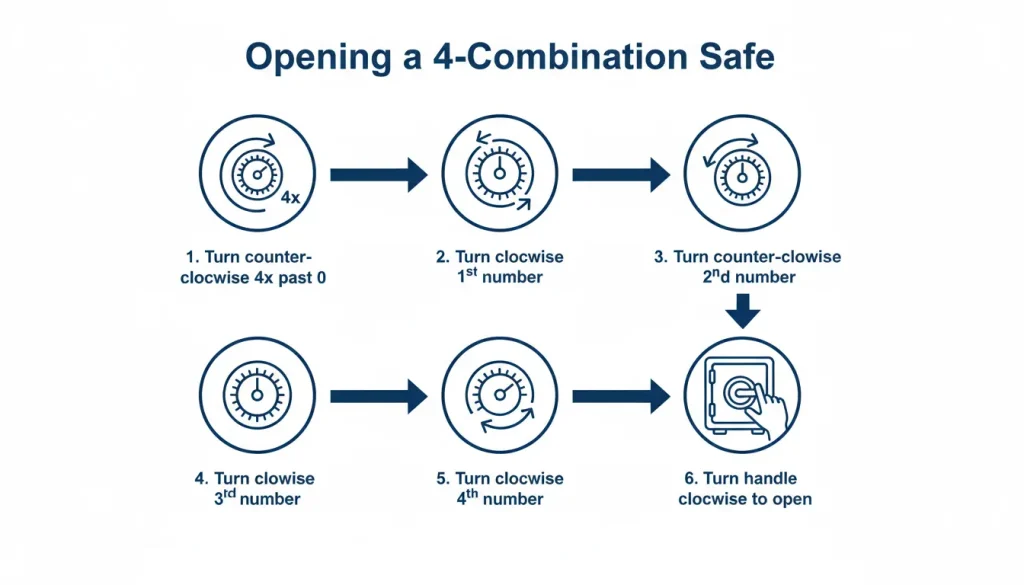
This type of safe is similar to the 3-combination model but requires an additional step. The typical sequence is Right-Left-Right-Left.
Step 1: Reset the Dial
Clear the lock by turning the dial to the LEFT (counter-clockwise) at least four full rotations, stopping at zero.
Step 2: Enter the First Number
Turn the dial to the RIGHT (clockwise). Pass the first number of the combination three times, stopping precisely on it the fourth time around.
Step 3: Enter the Second Number
Turn the dial to the LEFT (counter-clockwise). Pass the second number twice, stopping precisely on it the third time around.
Step 4: Enter the Third Number
Turn the dial to the RIGHT (clockwise). Pass the third number once, stopping precisely on it the second time around.
Step 5: Enter the Fourth Number
Turn the dial to the LEFT (counter-clockwise). Turn it directly to the fourth number and stop. Do not pass it.
Step 6: Open the Safe
The lock should now be unlocked. Firmly turn the handle to open the door.
How to Open a Digital Safe
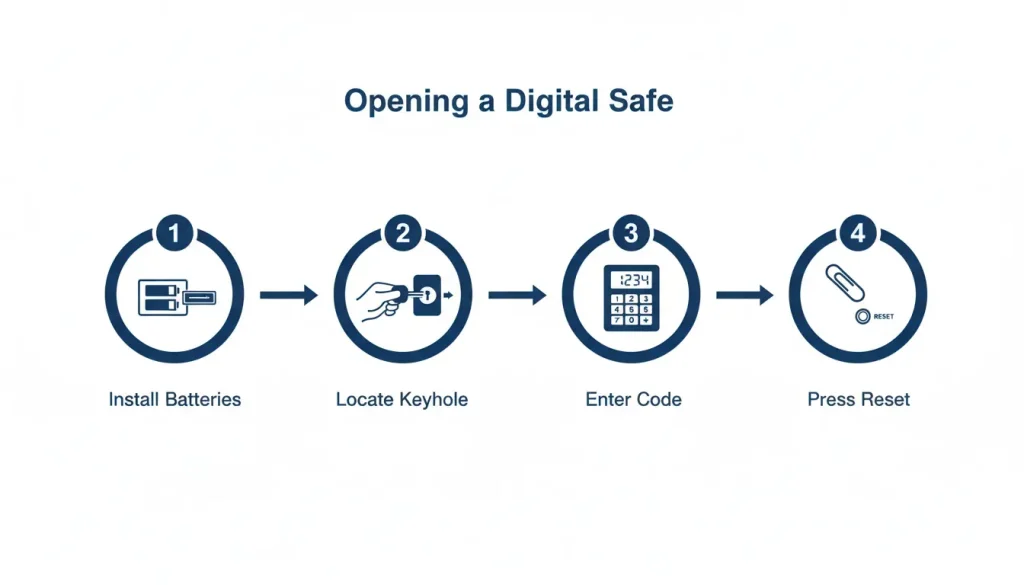
Digital safes with electronic keypads are common, and the issues are often related to power or simple resets.
Step 1: Replace the Batteries
The most common reason a digital safe won’t open is dead batteries. If the keypad is unresponsive or beeps weakly, this is likely the cause. The battery compartment is usually located on the outside of the door, under the keypad. If it is inside, your safe may have an external power jack or terminals where you can temporarily connect a 9-volt battery to power the keypad.
Step 2: Use the Override Key
Many digital safes come with a physical override key for emergencies. The keyhole is often hidden to maintain a sleek look. Check behind a removable logo plate on the front, under a plastic cap, or beneath the keypad itself. If you have this key, you can bypass the electronic lock entirely.
Step 3: Try the Factory Default Code
If you never changed the code from when you purchased the safe, it may still be set to the factory default. Check your user manual for this code. Common defaults include 0-0-0-0-0-0 or 1-2-3-4-5-6. If the code has been changed, this will not work.
Step 4: Look for an External Reset Button
Some models have a small, recessed reset button that can be pressed with a paperclip. This process is specific to the manufacturer and should only be done by following the instructions in the user manual, as it may wipe the programmed code and revert to the factory default.
How to Open a Key Lock Safe
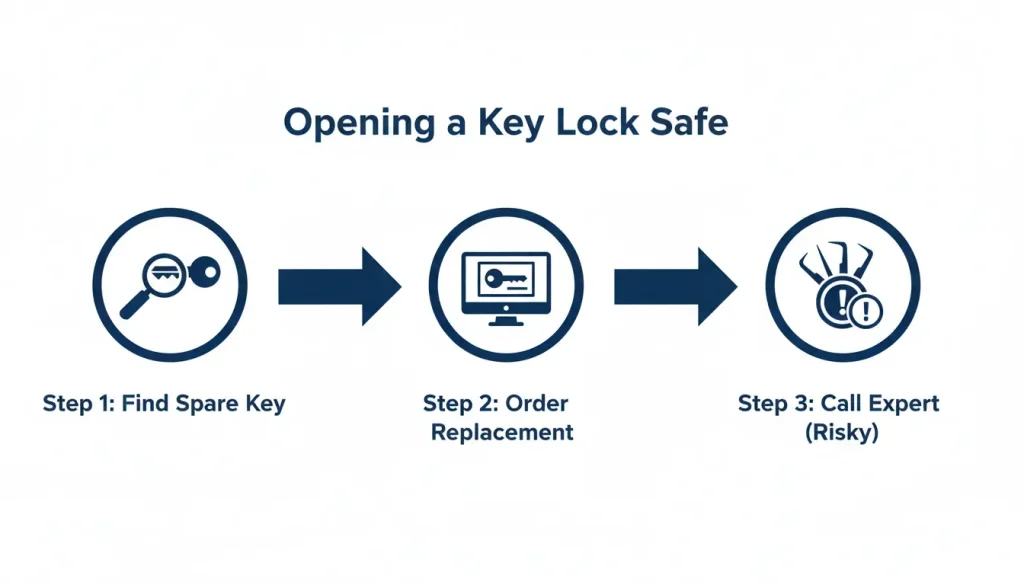
For safes that only use a key, the problem is simpler: the key is lost.
Step 1: Find the Spare Key
Most key-operated safes are sold with two keys. Before doing anything else, conduct a thorough search for the spare key. Check desk drawers, file cabinets, and other places where you store important items.
Step 2: Order a Replacement Key
If you registered your safe with the manufacturer, or if you still have the original paperwork with the key’s serial number, you can often order a replacement key directly from the company after providing proof of ownership.
Step 3: Consider Lock Picking (Expert Use Only)
While some people think about lock picking as a way to open a basic safe, it is not a recommended option for anyone without professional training. Attempting to pick the lock on your own can easily damage the locking mechanism, making it even harder and more costly for a safe technician to open it later. For this reason, lock picking should only ever be handled by experts who have the right skills and tools.
When All Else Fails: Call a Professional Locksmith
If you have tried all the methods above and the safe still won’t open, it is time to call a professional.
Why a Locksmith is the Best Solution
A certified, reputable locksmith who specializes in safes is your best and final option. They have the knowledge and specialized tools (like borescopes and precision drills) to open a safe with minimal or no damage. They can often retrieve the combination, repair the lock, or create a new key for you, allowing you to continue using your safe.
How to Hire the Right Professional
Look for a locksmith with specific experience in safes. Check for certifications, read online reviews, and ask for a price quote upfront to avoid surprises. A professional will always prioritize non-destructive methods first.



